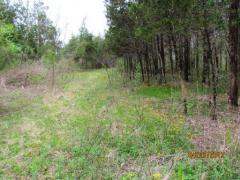Northern Metalmark
The Northern metalmark is a species on the edge in New Jersey but potentially could be restored to past numbers and distribution through greater land stewardship efforts.

The Northern metalmark (Calephelis borealis) is currently a Special Concern butterfly species that has been suffering a dramatic decline in New Jersey. New Jersey historically hosted over two dozen populations of this species but over the last decade it has been reduced to two small metapopulations scattered over a half dozen locations in Sussex and Warren counties.
Northern Metalmarks generally fly slowly, are easily approached, and are relatively easy to identify. They are small in size (wingspan of 1”-1 ¼”) and their wings are chestnut colored on the upper side and orange on the underside. The larval hostplant, roundleaf ragwort, Packera (Senecio)obovatus, can also be easily identified in the field. It is useful for finding suitable habitat during the nonbreeding seasons.
Overall, this species occurs across a wide range from Connecticut south westward through New Jersey, Pennsylvania, and West Virginia and westward through Ohio and Indiana. Within this range it often exists in metapopulations made up of small colonies numbering less than 20 individuals. In New Jersey, Northern Metalmark is restricted to the limestone outcrop areas that occur in Sussex and Warren counties. Primary habitats are openings within woodland or forested areas. Within this area, it is found in what could be called sunny glades and habitat edges predominantly in old field/mid-successional red cedar stands. It is in these areas that its host plant roundleaf ragwort, Packera (Senecio) obovatus, is abundant. Northern metalmark adults nectar on a wide variety of herbaceous plants within these habitats and will travel out of the habitat to find nectar and to disperse in order to colonize new locations.
New Jersey historically hosted over two dozen populations of this species but over the last decade it has been reduced to two small metapopulations scattered over a half dozen locations in Sussex and Warren counties.
This species is currently threatened by all of the usual suspects that cause problems for many of our rare species. These include habitat loss and fragmentation due to human activities, habitat change as a result of succession and canopy closure, and the invasion of non-native species. Many extirpated sites seem to have succumbed to a combination of canopy closure (shades out nectar plant species) and invasive plant competition. Invasive plants cause a wide variety of problems for this species. Invasive herbaceous plants such as Japanese stilt grass crowd out or over top of the foodplant. Shrubby invasives such as amur honeysuckle or autumn olive increase the shading of the understory and speed the closure of the open glades that this species inhabits. Lastly, vines such as Asian bittersweet, choke out canopy trees and create dense canopies that further alter the habitat structure at these sites. The combination of these problems serves to decrease the quality of the habitat at many of our northern metalmarks sites which, in turn, leads to diminished populations and the extirpation of smaller colonies.

In order to combat these declines, a greater effort has been made to survey and monitor all of our known northern metalmark colonies and to begin habitat restoration and enhancement efforts at several locations. This work has been focused on the White Lake population and is being conducted in conjunction with The Nature Conservancy, the caretakers at this site. Over the past two winters extensive areas of invasive plants have been removed and treated at two of the main populations. Areas of open soil were also seeded with native wildflowers to provide nectar sources for the adults. These sites will be monitored for the next several years to determine the population’s response to the habitat improvements. The host plants have already shown a positive response through greater areas of flowering plants that were once heavily shaded. We have also seen some localized recolonizations of small sites that had closed in and were opened back up through our management efforts. It is hoped that if some of our core populations can be increased in size they will serve as a source for the colonization of surrounding unoccupied suitable habitat. If successful, the management practices and techniques developed will be used as a guideline for the restoration of other northern metalmark sites within New Jersey.
Northern metalmark is a species on the edge in New Jersey but potentially could be restored to past numbers and distribution through greater land stewardship efforts.
By Robert Somes, Senior Zoologist, NJ Endangered & Nongame Species Program.
Find Related Info: Invertebrates




